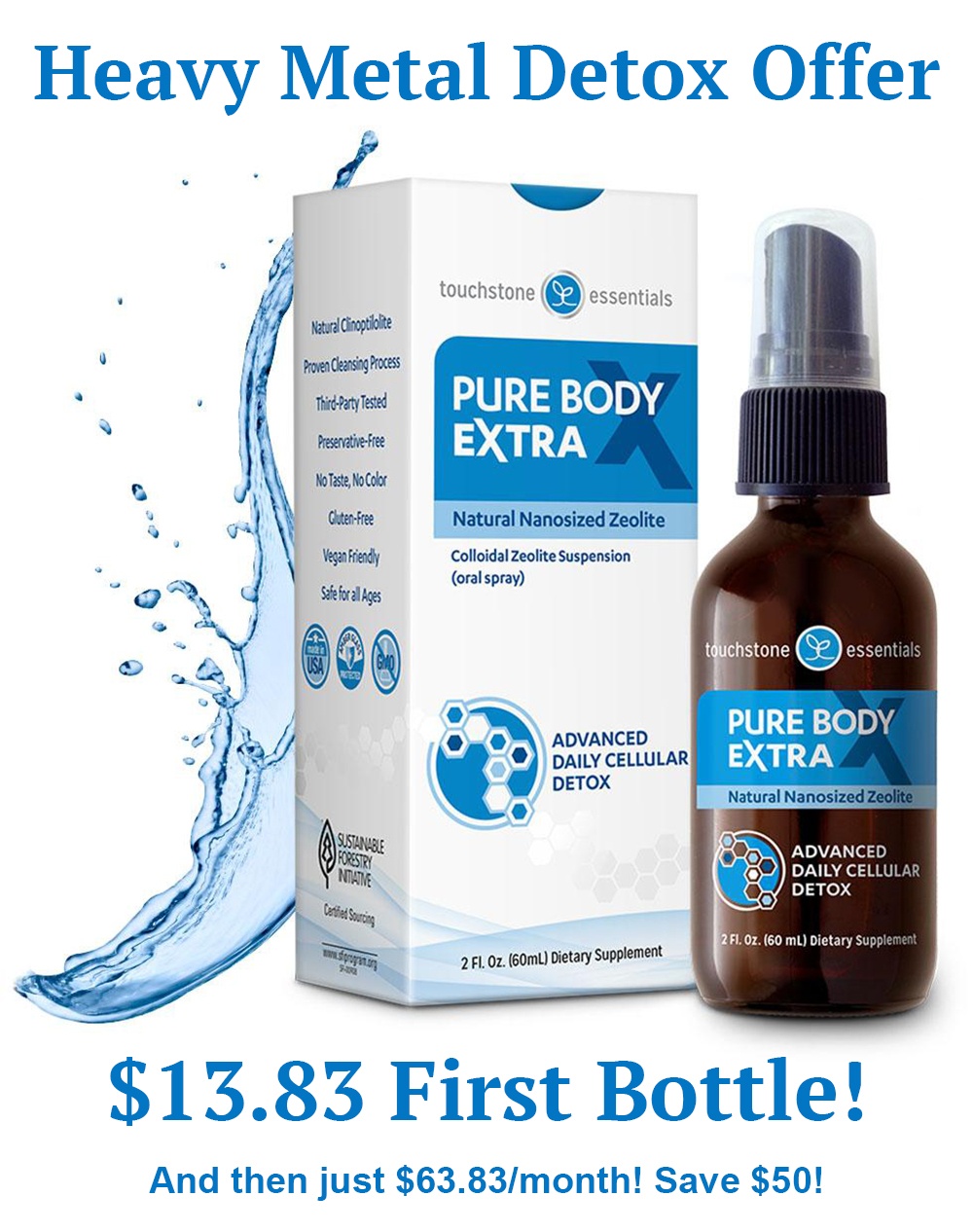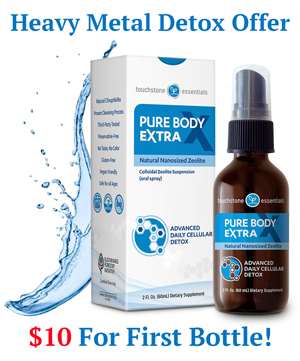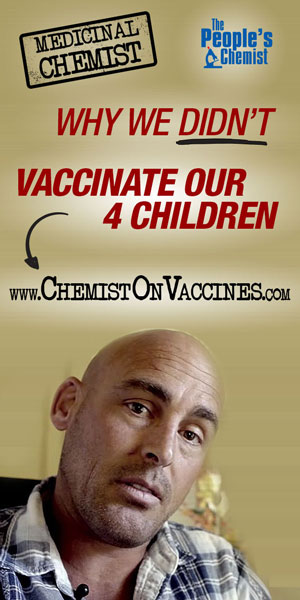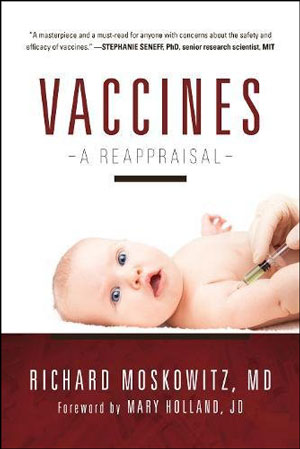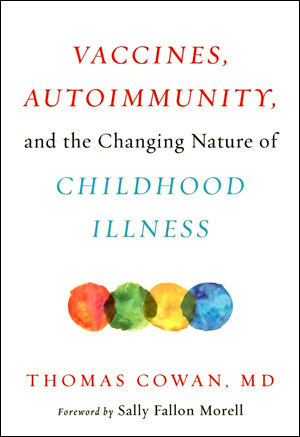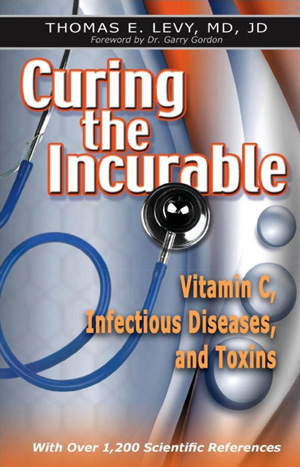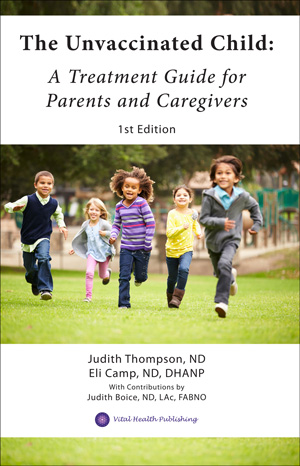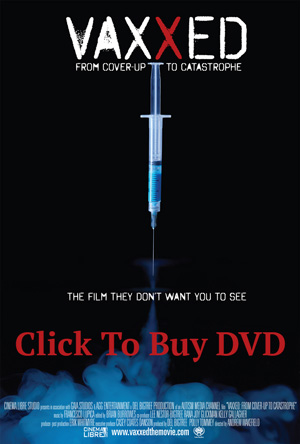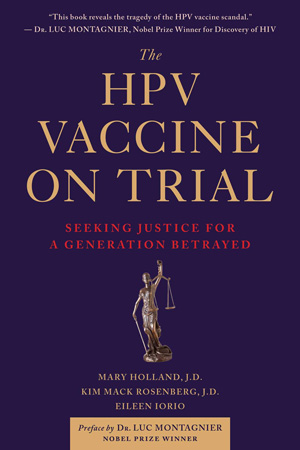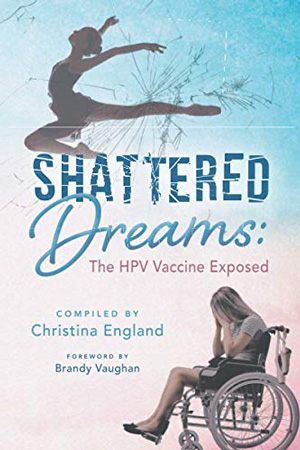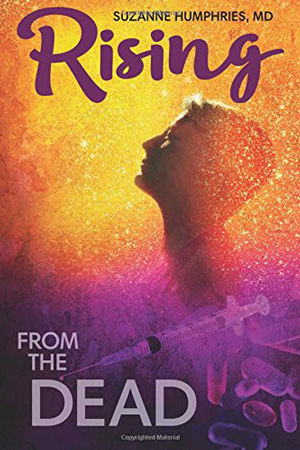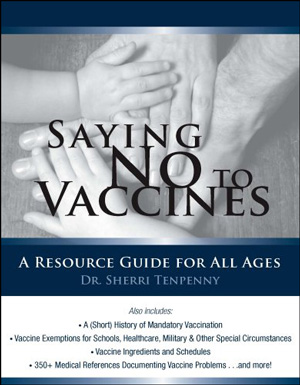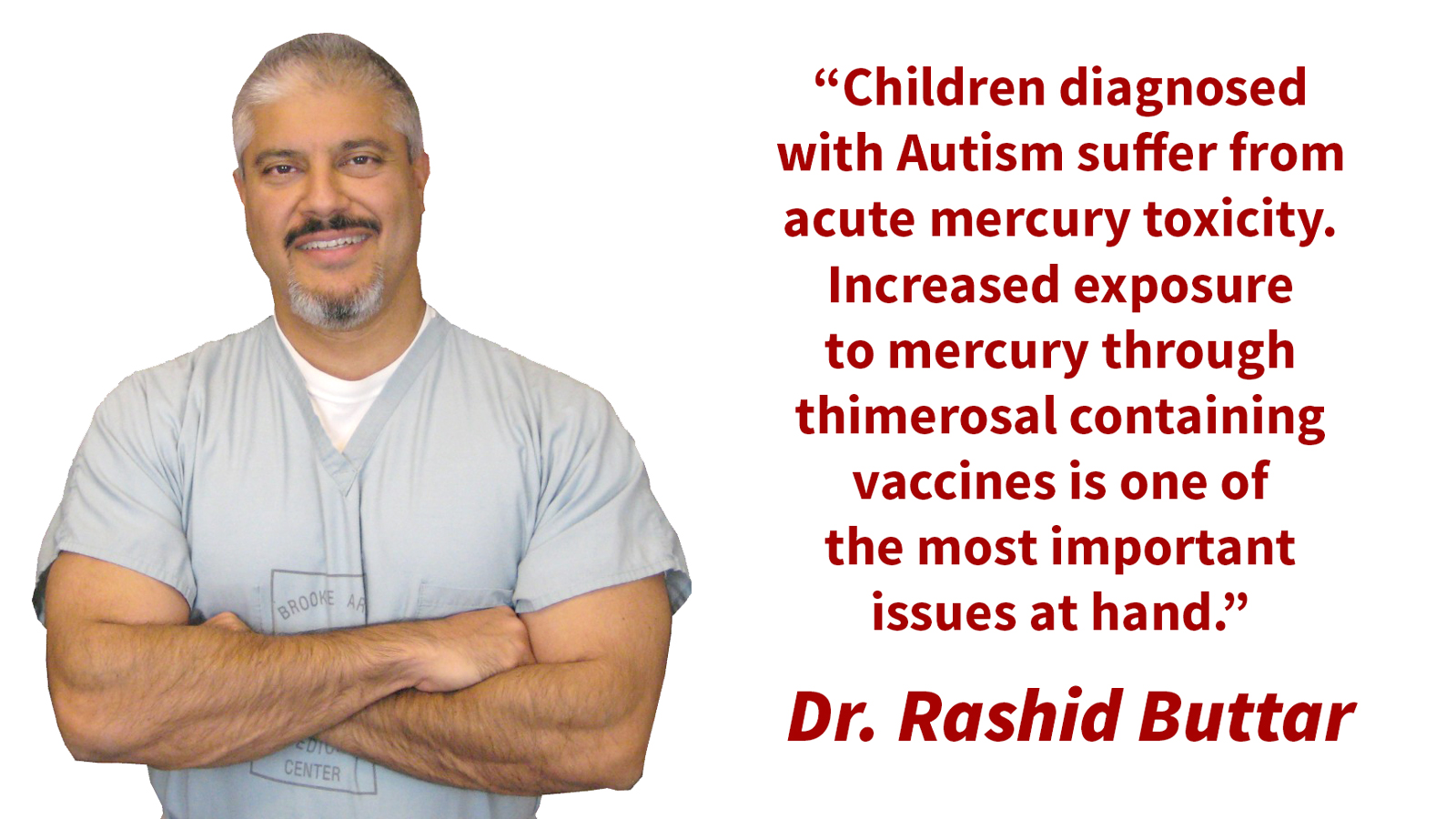
Detox, Vaccines, Mercury & Autism: The Misdiagnosis of Our Future Generations
Abridged Version—see www.drbuttar.com for complete text and additional commentary
US Congressional Sub-Committee Hearing on May 6, 2004
Rashid A. Buttar, DO, FAAPM, FACAM, FAAIM
Vice Chairman, American Board of Clinical Metal Toxicology
Visiting Scientist, North Carolina State University
The incidence of Autism has increased from approximately 1 in 10,000 in 1990 to 1 in 166, representing over a 5,700% increase in just the last 15 or so years. In some states, the incidence is now 1 in 80 [1 in 36 in 2023] and we now have over 1.5 million children diagnosed with Autism in the United States.
A lot of attention has been given regarding the link between mercury and autism, with mercury being the possible factor underlying the etiology of this condition. The issue of whether mercury plays a role in Autism or other neurodevelopmental disorders has been the subject of long debate and extreme political discourse but the evidence is overwhelmingly obvious to even the simplest of intellects, once the data is objectively reviewed.
The prevalence of mercury in our society is endemic in nature. The association of mercury with chronic disease in the US “medical literature” exists but is very anemic. However, when searching under Toxline under the Agency for Toxic Substances and Disease Registry (ATSDR), a division of Centers for Disease Control (CDC), one finds all the scientific literature that also includes didactic literature, NOT just the “medical literature.” Not surprisingly to advanced researchers and physicians, the association of mercury to chronic diseases is well documented in the didactic scientific literature.
The search for the association between mercury and cardiovascular disease—the number one killer in the industrialized world—revealed 358 scientific papers exemplifying the relationship. The search for the association between mercury and cancer—the number two killer in the industrialized world at the time of this writing—revealed 643 scientific papers exemplifying the relationship. Both of these conditions represent 80% cause of all deaths in the industrialized world, according to the WHO (World Health Organization) as published in 1998. But the association of mercury with neurodegenerative diseases is the most significant, with the references numbering 1445.
The inevitable question is: “How do we get exposed to mercury?” The sources surround us, from mercury amalgams in our teeth, to the contamination of our water sources, inhalation of combustion from fossil fuel, fish that we consume, contaminated water supplies, virtually all vaccinations, and via breast milk, just to name a few. So if mercury is so devastating, why is it allowed to be in our flu shots, vaccines, foods, etc.? This is the “million dollar” question, although it is quite evident to the well informed that the answer will be found somewhere along the money trail.
Increased exposure to mercury through thimerosal containing vaccines is one of the most important issues at hand. Thimerosal (also known as Marthiolate sodium, Mercurothiolate, Thiomersalate and a host of other names) is the common name of a substance known as ethyl mercurithiosalicylic acid. The overburdening knowledge that thimerosal is converted to ethyl mercury (a substance reportedly hundreds, if not a thousand times more destructive than inorganic mercury) in less than one minute after being introduced into the body should give great concern to parents and those appointed to protect the public. Yet, it is virtually ignored.
However, the vaccine issue must not overshadow the cumulative mercury exposure experienced by the patient during gestation and early infancy. These additional exposures besides the vaccine history include but are certainly not limited to: dietary mercury content, dental amalgam fillings which contribute greatly to the maternal mercury load, Rhogam (immunoglobulin) administration to mother during gestation, inoculations for tetnus toxoid, exposure to combustion of fossil fuels, water contamination, and mercuric compounds used in skin products.
Mercury causes damage by various mechanisms, including: competitive and noncompetitive inhibition of enzyme activity by reversibly or irreversibly binding to active sulfur—binding at the sites off and displacing other divalent cations—like magnesium, zinc, copper, and manganese causing a disruption of enzyme systems, disrupting critical electron transfer reactions, and complexing molecules and inducing a change in structure or conformation which causes them to be perceived as foreign by the body’s immune defense and repair system (hapten reactions) resulting in hypersensitivity that can potentiate or exacerbate autoimmune reactions. Mercury alters biological systems because of its affinity for sulfhydryl groups which are functional parts of most enzymes and hormones. Tissues with the highest concentrations of sulfhydryl groups include the brain, nerve tissue, spinal ganglia, anterior pituitary, adrenal medulla, liver, kidney, spleen, lungs heart and intestinal lymph glands. But most relevant to us for the purposes of this hearing is that mercury has been clearly shown to causes a denudation of the neurofibrils resulting in direct and devastating damage to the neuronal cells.
Children diagnosed with Autism suffer from acute mercury toxicity secondary to huge exposure while in utero (maternal amalgam load, dietary factors, maternal inoculations, Rhogam injections, etc.) and early on in life (vaccinations preserved with thimerosal, etc.). Adults diagnosed with Alzheimer’s suffer from chronic, insidious mercury toxicity secondary to exposure over a long time (amalgam load, inhalation of mercury vapors, combustion of fossil fuels, dietary factors, etc.).
Children with Autism (mercury toxicity) have many resulting imbalances in their systems, including but not limited to, significant allergies, opportunistic infections such as systemic candidiasis, hormonal imbalances, gastrointestinal dysbiosis, immune dysfunctions such as immuno-suppression or significant allergies, nutritional deficiencies, etc. However these are what I refer to as the “fires” of autism. All these and other “fires” of autism result from one major “spark.” Mercury! Successfully addressing these “fires” will accomplish transient improvement but until the “spark” (mercury) that constantly re-ignites these “fires” has definitively been eliminated, any improvement will be short lived at best. Mercury is NOT the fire. It is however, the spark that ignites and constantly re-ignites these “fires.” The fire will keep re-igniting unless the “spark” is eliminated. Thus, mercury is the underlying common denominator and exacerbates the destructive nature of other embedded heavy metals and compounds, contributing in various ways to all the problems from which these children suffer.
The reason some individuals have severe damage from mercury where others do not have serious adverse neurological deficits extends due to various factors which include biological individuality and genetic predisposition. In addition, factors such as the type of toxicity exposure makes an enormous difference. Was it inhaled, ingested, injected or exposed on their skin? What type of mercury exposure did the individual receive? Was it organic or inorganic mercury? If it was organic, was it ethyl mercury or methyl mercury? How frequent was the exposure to the source of toxicity? Was there a significant maternal load present prior to birth? Was the situation exacerbated by the mother being inoculated, or having Rhogam administration either during gestation or even, prior to conception? How many vaccine administrations took place and over what period of time? What about the diet? How about the proximity to industrial sites, and exposure to combustion of fossil fuel? As you can see, the variables are extensive.
Let us answer the question why some people are affected while others show no manifestations of mercury toxicity, despite living in the same environments. In our case, the discussion will be limited to mercury, which is considered to be the second most toxic metal known to man but this explanation is applicable to most other heavy metals as well.
Most individuals exposed to mercury as well as other heavy metals have the ability to at least begin the process of eliminating these heavy metals out of their system. But not everyone has this ability and the extent of variability in the ability of an individual to detoxify their systems will determine the severity of the symptoms of toxicity. Slides #10 to #14 show the typical individual who can get rid of mercury with appropriate treatments. Despite having been exposed to severe levels of mercury vapor, this patient named Robin T. was able to detoxify once appropriately treated with DMPS, a synthetic amino acid chelation agent. Her mercury level was almost 22 fold greater or 2200% more than what is considered to be safe but with appropriate treatments, her levels returned to normal and her symptoms of mercury toxicity resolved in a relatively short period of time.
However, patients with impaired detoxification pathways do not show similar results on testing. Their bodies are unable to release the mercury and/or other metals and on testing, the mercury does not appear. The basis of our treatment protocol for children diagnosed with autism was determined by my clinical observation that certain individuals were unable to detoxify mercury like the vast majority of people appear to have the ability to do so. Slides #16 to # 21 show the case of Karen D. who showed no appreciable levels of mercury despite appropriately being “challenged” with DMPS by two different physicians over a year apart. In Karen D.’s case, she could not detoxify her system effectively despite being treated appropriately with the correct diagnostic methods.
Karen D. was 34 years old when she presented to me with multiple complaints including pain, glactorhea (milk coming out of her breast), ataxia (abnormal gait while walking), dysphagia (painful swallowing), inability to articulate with a new onset of stuttering, arrhythmia, chest pain, myalgias (muscle aches), artharalgias (joint pain), hirtuism (facial hair), cephalgia (headache), insomnia (inability to sleep), fatigue, malaise (general feeling of sickness), depression, anxiety and suicidal ideations due to being unable to “live like this anymore.” On presentation, the patient had notified me she had seen 16 other physicians in the previous 5 years and if I could NOT help her, she would “take care” of the problems herself because she could no longer live this way. The level of mercury measured during each of Karen D.’s tests was inversely proportionate to the amount of mercury remaining in her system. It is important to note that this patient received treatments every week but the test results were obtained only every 20 weeks. Despite this disparity between treatments and testing, we see a dramatic and steady increase in mercury levels on testing, directly correlated with significant clinical improvements and alleviations of symptoms.
Karen D. needed to have persistent treatment for a period of almost 2 years, as seen on slides #16 to #21. However, as you will notice, Karen’s mercury levels continued to exponentially RISE until her last test which shows the results dramatically drop. What is most interesting is that as the test results revealed a consistently increasing level of mercury while the patient began to dramatically improve on a clinical basis. The reason the levels of mercury actually rose in each subsequent test, is that this testing method only determines how MUCH mercury and/or other metals we are able to remove. As treatment continued, we were effectively able to remove a greater quantity of mercury during each and every treatment.
We started treating children with Autism first in 1996. By 1997, we were being referred patients by a pediatric neurologist, who was following a mutual patient and observed significant changes in the child’s behavior after implementation of our treatments. However, by the end of 1998, taking care of children with special needs proved more than I wished to handle. Although we had far better success than the traditional approach, our treatments had not been responsible for “normalizing” any children or returning them to a “neurotypic” state. The emotional component was also overwhelming, just having to deal with the pain and frustration of the parents of these children. As a result, we stopped accepting new patients with the diagnosis of Autism or any type of developmental delay before the start of 1999.
On January 25, 1999, my son Abid Azam Ali Buttar was born. By the time he was 14 or 15 months old, he was already saying “Abu” which means father in Arabic, and a few other words such as “bye bye.” But by the age of 18 months, my son had not only failed to progress in his ability to speak, but had also lost the few words he had been saying. As he grew older, I began to worry more and more that he was suffering from a developmental delay. He exhibited the same characteristics that so many parents with children that have developmental delays we have observed, such as stemming, walking on tip toes, and lack of eye contact. Sometimes I would call to him but his lack of response would convince me there must be something wrong with his hearing. Certain sounds would make him cringe and he would put his hands on his ears to block the obvious discomfort he was experiencing. He would spend hours watching the oscillation of a fan. But through all this, when he would make eye contact with me, his eyes would say, “I know you can do it Dad.” The expression he would give me, for just an instant, would be that of a father encouraging his son.
The oceans of tears that I cried and the hours that I spent trying to determine what was happening to my son are no different than that of any other parent in the same situation. The only difference was that I was one of only 190 some doctors throughout the US as board certified in clinical metal toxicology. And if this was metal related—as was a theory that I had read—I should know how to fix this problem. I tested him and re-tested him and tested him again, searching for mercury. My son’s tests showed no appreciable levels of mercury. But the older he became, the more obvious it became that my son was not developing as he was meant to be developing. My son was not meant to be this way and that was the only one thing that I knew for certain. From the time Abie lost his speech which was around 18 months or so, until 36 months of age, he had absolutely no verbal communication except for the one syllable that he would utter, “deh,” on a repetitive basis.
About the same time while desperately searching for the cause of the same ailment that had afflicted so many of my own patients previously, I had been invited to present a lecture regarding some of our research on IGF-1 and the correlation with cancer. I had notified the conference that I was too busy to present this lecture but when I learned that Dr. Boyd Haley was also scheduled to present at this conference, I changed my schedule and agreed to lecture just so I could meet and discuss my son’s situation with Dr. Haley. That meeting turned out to be one of the key elements which resulted in our development and subsequent current protocol for treating children with autism, autism like spectrum and pervasive developmental delay. My son was the first one who went through this protocol once safety had been established. Dr. Haley told me of a study that had not yet been published at the time.
Just before the year 2,000, Holmes, Blaxill and Haley did a study assessing the level of mercury measured in the hair of 45 normally developing children versus 94 children with neurodevelopmental delays diagnosed as Autism using DSM IV criteria. The finding showed that the Autistic children had 0.47 parts per million of mercury in their hair where as the normally developing children had 3.63 parts per million, more that 7 times the same level of mercury as the Autistic children. Opponents of the mercury-neurodegeneration camp used this opportunity to state that this study clearly showed that mercury had NOTHING to do with Autism or any other neurodegenerative condition. However, they completely missed the point of the study—the autistic children had impaired detoxification systems!
These findings were published in the International Journal of Toxicology in 2003. Understanding these findings, along with my clinical experience with the case of Karen D. as previously detailed, led me to the conclusion that a more aggressive method of treatment was necessary compared to the DMSA and various other treatments I had to date employed in the attempt to document high levels of mercury in my son, which up to this point, had not been successful. The first two attempts with DMPS as a challenge treatment were unsuccessful, the first due to difficulty catching the urine since Abie was only 2 years old at the time, and the other due to loss of the urine specimen while being delivered to the laboratory. The third try with DMPS, which represented the 6th test we did on my son with all previous tests showing no appreciable levels of mercury, resulted in the findings that his mercury level was over 400% that of safe levels. It is important to note that this level was only indicative of what we were able to “elicit or sequester” out of him. His actual levels were far greater.
I started Abie’s treatments on his 3rd birthday, using a rudimentary version of the current TD-DMPS (DMPS in a transdermal base) that my partner, Dr. Dean Viktora and I had played around with a few years previously. By the age of 41 months—5 months after initiating treatment with the TD-DMPS—my son started to speak, with such rapid progression that his speech therapist was noted to comment how she had never seen such rapid progress in speech in a child before. Today at the age of 5, Abie is far ahead of his peers, learning prayers in a second language, doing large mathematical calculations in his head, playing chess and already reading simple 3 and 4 letter words. His attention span and focus was sufficiently advanced to the point of being accepted as the youngest child into martial arts academy when he was only 4. His vocabulary is as extensive as any 10 year old’s, and his sense of humor, power to reason and ability to understand detailed and complex concepts constantly amazes me. This was the preliminary basis for the initiation of our retrospective study which came about as a result of the extraordinary results obtained in the treatment of my son Abie, and the subsequent treatment of 31 other children treated in the same manner.
The retrospective Autism study consisted of 31 patients with the diagnoses of autism, autism like spectrum, and pervasive developmental delay. Inclusion criteria was simple, including an independent diagnosis of the above mentioned conditions from either a neurologist or pediatrician, and the desire of the parent to try the treatment protocol using TD-DMPS. All patients reviewed had been sequentially treated as they presented to the clinic and only those patients whose parents who did not wish to be treated with the TD-DMPS were not included. As a side note, of all the parents presented with this option of treatment with DMPS, only one did not wish their child to be treated with DMPS. Some of the older children (over the age of 8) were treated with IV administration of DMPS and their data was obviously not included in this retrospective analysis. However, it’s important to note how willing parents were to get their children better.
All 31 patients were tested for metal toxicity using four different tests: urine metal toxicity and essential minerals, hair metal toxicity and essential minerals, RBC metal toxicity, and fecal metal toxicity, all obtained from Doctor’s Data Laboratory. These tests were performed at baseline, and repeated at 2 months, 4 months, 6 months, 8 months, 10 months, 12 months, and then every 4 months there after. In addition, all study patients had chemistries, CBC with differentials, lipid panels, iron, thyroid profiles and TSH drawn every 60 days. Further specialized testing also included organic acid testing (OAT test) from Great Plains Laboratory and complete diagnostic stool analysis (CDSA) from Doctor’s Data Laboratory. If indicated, IgG mediated food allergy testing was also obtained but was not routinely performed. All 31 patients showed little or no level of mercury on the initial baseline test results.
Compared to the baseline results, all 31 patients showed significantly higher levels of mercury as treatment continued. After two months of treatment with the TD-DMPS, one patient had approximately a 350% increase from previous baseline levels. The improvements in the patients in the study correlated with increased yield in measured mercury levels upon subsequent testing. Essentially, what was noted was that as more mercury was eliminated, the more noticeable the clinical improvements and the more dramatic the change in the patient.
The manifestations of this evidence for clinical improvements included many observations but were specifically quantifiable with some patients who had no prior history of speech starting to speak at the age of 6 or 7, sometimes in full sentences. Patients also exhibited substantially improved behavior, reduction and eventual cessation of all stemming behavior, return of full eye contact, and rapid potty training, sometimes in children that were 5 or 6 but had never been successfully potty trained. Additional findings reported by parents included improvement and increase in rate of physical growth, as well as the children beginning to follow instructions, becoming affectionate and social with siblings or other children, seeking interaction with others, appropriate in response, and a rapid acceleration of verbal skills. The results of many of these children has been documented on video, and other physicians involved with this protocol have been successfully able to reproduce the same results.
DMPS, or dimercaptopropane – 1 sulfonate, is a primary chelator for mercury and arsenic. DMPS has pitfalls as well as advantages. The pitfalls include oral dosing—which is the usual recommended dosing—because it is approximately 50% to 55% absorbed by the gastrointestinal mucosa. As a result of already compromised gastrointestinal function and dysbiosis noted in most of these children, DMPS by mouth becomes impractical. Most of the children that have taken the DMPS orally for more than 1 week continuously begin complaining of abdominal pain, cramping and other GI distress. We tried the oral DMPS for almost 6 weeks before eliminating it as a possible therapeutic method. Intravenous methods of application were not an option in children so young, although is the preferred method I have used in my clinical practice for my adult patients with mercury toxicity.
All study patients were also monitored for renal function, and mineral depletion. The key to success with these children was the constant and continuous “pull” of mercury by being able to dose it every other day. Each patient was put on a protocol consisting of the transdermal (on the skin) DMPS (TD-DMPS). Transdermal DMPS is DMPS conjugated with a number of amino acids, delivered in highly specialized micro-encapsulated liposomal phospholipid transdermal base with essential fatty acids. The frequent dosing is one of the most important components of the TD-DMPS. It is important to note that DMPS is highly oxygen reactive and is very unstable when exposed to air. This and many other issues of delivery, stabilization, and oxidation have all been successfully identified and resolved over the last two years with the final result now a pending patent. In addition, certain other components have been added to the TD-DMPS to potentiate the efficacy of treatment, such as the addition of various amino acids and glutathione.
There are a number of agents that have been demonstrated to have clinical utility in facilitating the removal of mercury from someone who has demonstrated clinical signs and symptoms of mercury toxicity. The most important part of this systemic elimination process, however, is the removal of the source of mercury. Once this has been completed, treatment for systemic mercury detoxification can begin.
In our clinical experience, the most effective method that has resulted in the consistent, slow and safest method of removal of mercury in the pediatric population is the TD-DMPS that was originally formulated for the purposes of treating my son’s developmental delay. Since its implementation, we have now successfully treated scores of patients, many of whom have completely recovered and all of whom have improved since the implementation of this treatment. These results have been duplicated by other physicians involved with the care of patients with neurodegenerative disease processes.
Summary
The underlying common denominator in chronic neurodegenerative disease seems to be either decreasing vascular supply (less blood to the brain) or accumulation of heavy metals, particularly mercury. The inability of an individual to eliminate toxic metals, especially mercury, is directly related to the level of neurodegeneration experienced. In the young patient population suffering from autism or pervasive developmental delay, the vascular supply is not an issue. The underlying pathology of children with autism and the geriatric population with Alzheimer’s is of the same etiology, specifically mercury toxicity.
Both these patient populations suffer from the inability to excrete mercury as a result of a genetic predisposition resulting from various factors. This allele appears to be associated with the inability to get rid of mercury from the system. If these patient populations inhabited a complete mercury free environment, they would not have the problems associated with autism or Alzheimer’s. When the mercury is successfully removed from their systems, these individuals begin to significantly improve due to a cessation of the destruction and denudation of the neurofibrils, as evidenced by steady improvement in cognitive function.
Mercury is the “spark” that causes the “fires” of autism as well as many other neurodegenerative diseases including PDD, ADD, ADHD and Alzheimer’s. Autism is the result of high mercury exposure early in life versus Alzheimer’s where there is a chronic accumulation of mercury over a life-time. A doctor can treat ALL the “fires” but until the “spark” is removed, there is minimal hope of complete recovery with most realized improvements being transient at best. Mercury is the underlying common denominator of all the problems from which these children suffer due to impairment of their excretory pathways. And the only solution for these non-eliminators is to effectively remove the mercury while repairing and enhancing the damaged elimination and detoxification pathways. Concomitantly addressing the GI tract is vital if the goal of treatment is to achieve permanent recovery.
Once the process of mercury removal has been effectively initiated, the source of damage is now curtailed and full recovery becomes possible. Complete recovery can now be attained and further enhanced by utilizing various additional essential therapies including nutrition, hyperbarics, etc. It is my hope and prayer—along with the hopes and prayers of all clinicians who are cognizant of these facts—that the US Congress will act quickly and decisively to put an end to this legalized and tolerated mass modern genocide by outlawing the use of any form of mercury in any capacity in humans, including mercury based preservatives in all childhood and adult vaccines as well as dental amalgams, while also limiting the amount of mercury being released into our environment in order to prevent human exposure so as to reduce the total body burden.
Rashid A. Buttar, DO, FAAPM, FACAM, FAAIM
Center for Advanced Medicine and Clinical Research
20721 Torrence Chapel Road, Suite # 101 – 103
Cornelius, NC 28031
Clinic Phone: (704) 895-9355
www.drbuttar.com
Reprinted with permission.





